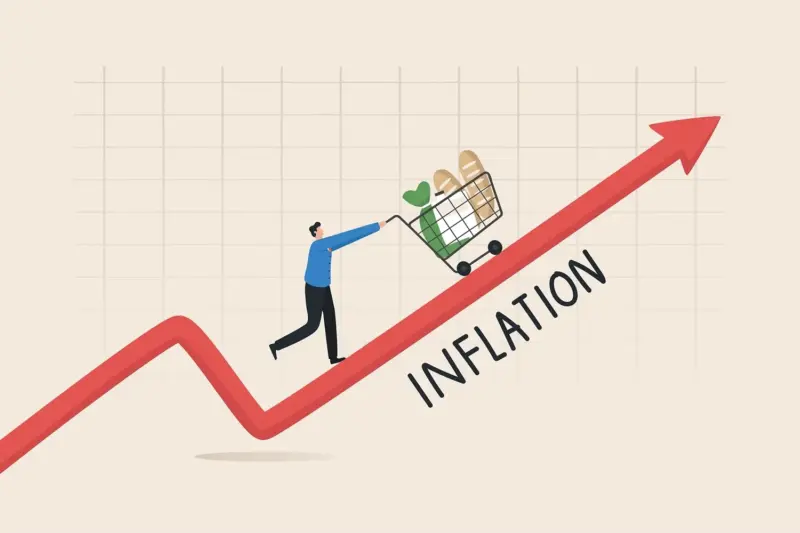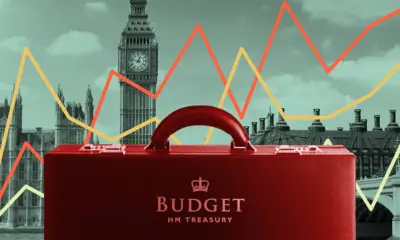Business
The Return of Inflation Anxiety and What It Means for City Investors

Introduction
Inflation, once considered a fading threat, has re-emerged as a defining concern for London’s financial community. After a brief period of easing, recent data suggest that price pressures are proving more persistent than policymakers expected. For City investors, this resurgence of inflation anxiety is reshaping expectations for interest rates, bond yields, and asset valuations.
The Office for National Statistics recently reported that consumer price inflation in the UK rose to just above four percent, reversing several months of decline. Energy prices remain volatile, food costs have stabilized but not fallen significantly, and wage growth continues to outpace productivity. The Bank of England now faces a familiar dilemma: how to contain inflation without stifling a fragile economic recovery. For investors, this uncertainty is altering how portfolios are structured and where capital flows next.
The Roots of Renewed Inflation
The latest rise in inflation reflects a complex mix of global and domestic factors. Energy markets remain sensitive to geopolitical risks, and shipping costs have risen due to disruptions in trade routes. Domestically, labour shortages and strong wage growth are keeping service-sector inflation elevated. According to IMF analysts, this pattern mirrors a global trend in advanced economies where structural factors are keeping inflation higher for longer.
In London, the effects are particularly visible. Businesses face higher input costs, and consumers are adjusting spending patterns. Retail activity in the West End has slowed, while higher rents and interest costs are straining both households and small enterprises. The City is once again operating in an environment where inflation expectations drive financial behavior as much as monetary policy does.
The Bank of England’s Calculated Patience
The Bank of England has adopted a patient stance, signaling that rates will remain restrictive until there is convincing evidence of sustained disinflation. While markets had priced in potential rate cuts earlier in the year, those expectations have now been delayed. The central bank’s cautious tone has reassured bond investors but also dampened enthusiasm in equity markets.
Reuters data show that short-term gilt yields have climbed modestly, reflecting renewed expectations of prolonged tight policy. Meanwhile, the pound has strengthened slightly, supported by higher returns on sterling assets. Yet this strength is a double-edged sword for exporters and multinationals that earn a significant portion of revenue abroad. For now, monetary stability comes at the cost of slower growth momentum.
City Investors Reassess Strategy
Inflation anxiety is forcing portfolio managers to rethink risk exposure. Traditional defensive assets like bonds are no longer offering the same level of protection, as real yields remain low once inflation is accounted for. Equity investors are shifting focus toward sectors with pricing power such as energy, consumer staples, and financial services.
Fund managers are also showing renewed interest in inflation-linked securities and commodities. Gold and short-duration fixed-income instruments have seen increased demand. According to data from Bloomberg, investment inflows into inflation-protected bonds rose by more than ten percent over the past quarter. The strategy reflects a broader shift toward capital preservation as investors brace for continued volatility.
Property and Real Assets Under Pressure
London’s property market, often viewed as a hedge against inflation, is showing mixed signals. While commercial real estate values have softened, rental yields are holding firm. Investors remain cautious about large development projects given high financing costs and uncertain demand. Residential property, meanwhile, continues to face affordability constraints as mortgage rates stay elevated.
Institutional investors are diversifying into infrastructure and renewable energy projects, sectors seen as more resilient in an inflationary environment. These long-term assets offer steady cash flows linked to inflation indices, aligning with investor preferences for predictable income streams. Yet the appetite for risk remains subdued as capital becomes more selective and cost-sensitive.
Global Influences and Comparative Dynamics
London’s inflation story is closely tied to global monetary trends. The US Federal Reserve and European Central Bank are confronting similar dilemmas, balancing inflation control with growth management. The divergence in rate paths among major economies is shaping currency markets and cross-border capital movement.
For City investors, global coordination—or the lack of it—plays a significant role. A stronger dollar, for instance, has implications for emerging market exposure, while European rate differentials affect London’s position as a regional trading hub. The interconnectedness of markets means that domestic inflation cannot be viewed in isolation from international developments.
Policy Uncertainty and Fiscal Signals
The government’s fiscal stance adds another layer of complexity. While the Treasury has emphasized fiscal discipline, political pressures to ease the cost of living are growing. Temporary tax reliefs or energy subsidies, though popular, could risk prolonging inflation if not carefully targeted. Investors are therefore monitoring fiscal announcements as closely as monetary ones.
A lack of clarity in long-term fiscal planning has already contributed to market unease in previous cycles. Economists stress the importance of policy coordination between the Treasury and the Bank of England to avoid sending mixed signals to markets. For investors, consistent messaging is key to maintaining confidence in UK assets.
Outlook for the City
The immediate challenge for London’s financial community is managing portfolios through a period of persistent uncertainty. Inflation may moderate gradually, but its path is unlikely to be smooth. The City’s strength lies in its adaptability and depth of expertise, yet even seasoned investors are adopting a more cautious stance.
Analysts at the Financial Times suggest that the coming quarters will test the balance between monetary restraint and fiscal flexibility. A clear and coordinated strategy could help anchor expectations and restore investor confidence, while policy missteps risk reigniting volatility in both currency and bond markets.
Conclusion
The return of inflation anxiety is reshaping London’s financial landscape. Investors are more cautious, central bankers are more vigilant, and policymakers are more constrained. The City, accustomed to cycles of boom and correction, is once again recalibrating its approach to risk.
In the months ahead, success will depend on discipline and foresight. The financial community must navigate a path where inflation is neither ignored nor overreacted to. For London, this moment is not simply about surviving economic turbulence but demonstrating its enduring ability to adapt and lead in an unpredictable global environment.



















